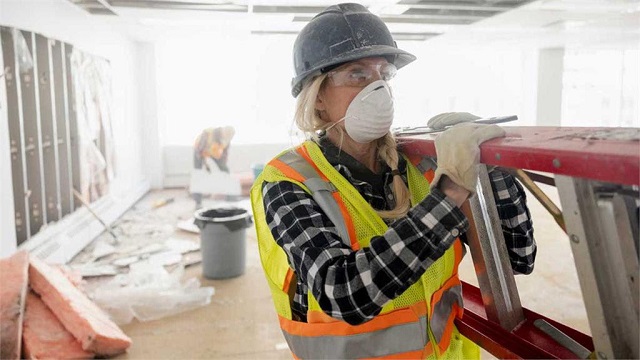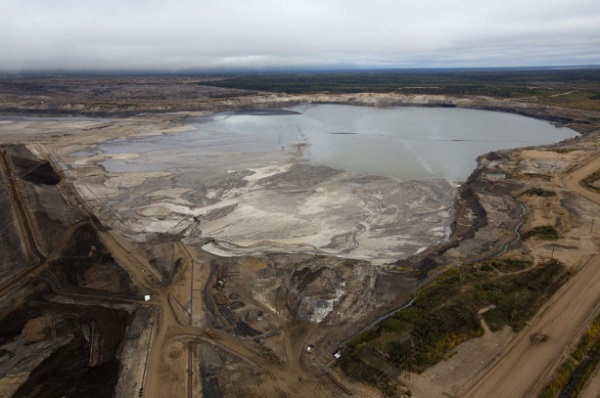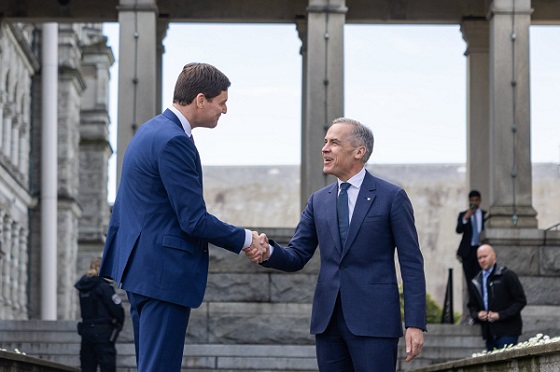Alberta
Alberta Budget 2024 – Employment

Budget 2024: Maintaining Alberta’s economic advantage
Budget 2024 is a responsible plan that maintains Alberta’s competitive advantage so businesses and industry can continue to innovate, thrive and create jobs.
Budget 2024 puts Alberta on a path of continued economic growth through funding that supports creating jobs, attracting investment and developing a skilled and diversified workforce. Strategic investments will empower job creators and innovators to invest, grow and flourish in Alberta’s diversifying economy.
“Budget 2024 reaffirms our commitment to diversify, attract new investment and provide more jobs that keep Alberta’s engine humming. Strategic investments that support the growth of Alberta cities and promote apprenticeship programming and emission reduction technology will help create more opportunities to build an even stronger Alberta.”
Alberta remains a key driver of Canada’s economic prosperity, accounting for 22 per cent of all jobs created in the country last year, despite having just 12 per cent of the population. Compared with other provinces, Alberta has the highest weekly earnings and the lowest taxes, offering many incentives to newcomers seeking a great place to call home.
To further build on these advantages, Budget 2024 introduces the Alberta is Calling attraction bonus, a $5,000 refundable tax credit aimed at attracting out-of-province workers in the skilled trades. A total of $10 million will be provided to workers.
“The Alberta is Calling attraction bonus will support our government’s commitment to build a skilled and resilient labour force that helps businesses and the economy thrive. We will continue to foster the conditions for growth to ensure Alberta remains the best place to live, work, invest, do business and raise a family.”
Budget 2024 supports the sustainable growth of Alberta’s cities and communities. In addition to $724 million in municipal infrastructure funding through the Local Government Fiscal Framework in 2024-25, Budget 2024 launches the new Local Growth and Sustainability Grant, an application-based program that provides $60 million over three years to enable municipalities to fund infrastructure that supports economic development and addresses unique and emergent needs in their communities.
“We’re pleased to see so many people choosing to move to Alberta to experience the advantages this province has to offer, thanks in part to the strong communities we are supporting through predictable, sustainable funding. We also recognize the pressure this growth can put on local communities. The Local Growth and Sustainability Grant is part of our responsible plan to support a vibrant province and help communities respond to growth opportunities and acute sustainability challenges.”
As Alberta’s economy continues to grow, so does the need to sustain a vibrant and robust workforce to meet the needs of Alberta employers. Budget 2024 addresses current and future potential labour shortages by expanding skills and knowledge in key areas.
More than $100 million in new funding for apprenticeship programs will add 3,200 seats to help meet growing demand at Alberta’s post-secondary institutions. Another $361 million from the Budget 2024 Capital Plan will build and upgrade research and learning facilities in some of the province’s world-class post-secondary institutions. Investments include $63 million to renovate and expand the W.J. Elliott agricultural mechanics building at Olds College and $55 million to increase STEM programming capacity at the University of Calgary.
“Supporting growth in Alberta’s economy means ensuring no region is left behind. Our funding commitments to STEM programming at the University of Calgary and agriculture at Olds will create new opportunities for students in our rural economy and those studying in our largest urban centre.”
The Alberta Petrochemicals Incentive Program (APIP) is helping turn the province into a top global producer of petrochemicals. The APIP provides grants to cover 12 per cent of eligible capital costs for Alberta-based petrochemicals projects. In 2023-24, three projects are expected to receive APIP grant payments totalling $116 million, helping to diversify Alberta’s economy and create jobs.
“Royalties collected from oil and gas fund the things Albertans rely on, like health, education and social services. Budget 2024 supports the government’s mission to strengthen investor confidence and support job creation in communities all while lowering emissions through the use of new technologies.”
Budget 2024 highlights
- $597 million over three years from the province’s TIER (Technology Innovation and Emissions Reduction) fund to support a suite of programs that reduce emissions, support clean technology development, enhance climate resiliency and create jobs for Albertans.
- $1.5 billion for child-care services, an increase of $200 million, enabling more Albertans with young children to participate in the workforce.
- $32 million to build three new water intakes in the Designated Industrial Zone in Alberta’s Industrial Heartland, which will support long-term private investment opportunities in the area.
- Almost $30 million over three years for the Aboriginal Business Investment Fund, an increase of nearly $8 million, to help fund business startup and expansion costs in Indigenous communities.
Budget 2024 is a responsible plan to strengthen health care and education, build safe and supportive communities, manage the province’s resources wisely and promote job creation to continue to build Alberta’s competitive advantage.
Alberta
Alberta is investing up to $50 million into new technologies to help reduce oil sands mine water

Technology transforming tailings ponds
Alberta’s oil sands produce some of the most responsible energy in the world and have drastically reduced the amount of fresh water used per barrel. Yet, for decades, operators have been forced to store most of the water they use on site, leading to billions of litres now contained largely in tailings ponds.
Alberta is investing $50 million from the industry-funded TIER system to help develop new and improved technologies that make cleaning up oil sands mine water safer and more effective. Led by Emissions Reduction Alberta, the new Tailings Technology Challenge will help speed up work to safely reclaim the water in oil sands tailing ponds and eventually return the land for use by future generations.
“Alberta’s government is taking action by funding technologies that make treating oil sands water faster, effective and affordable. We look forward to seeing the innovative solutions that come out of this funding challenge, and once again demonstrate Alberta’s global reputation for sustainable energy development and environmental stewardship.”
“Tailings and mine water management remain among the most significant challenges facing Alberta’s energy sector. Through this challenge, we’re demonstrating our commitment to funding solutions that make water treatment and tailings remediation more affordable, scalable and effective.”
As in other mines, the oil sands processing creates leftover water called tailings that need to be properly managed. Recently, Alberta’s Oil Sands Mine Water Steering Committee brought together industry, academics and Indigenous leaders to identify the best path forward to safely address mine water and reclaim land.
This new funding competition will support both new and improved technologies to help oil sands companies minimize freshwater use, promote responsible ways to manage mine water and reclaim mine sites. Using technology for better on-site treatment will help improve safety, reduce future clean up costs and environmental risks, and speed up the process of safely addressing mine water and restoring sites so they are ready for future use.
“Innovation has always played an instrumental role in the oil sands and continues to be an area of focus. Oil sands companies are collaborating and investing to advance environmental technologies, including many focused on mine water and tailings management. We’re excited to see this initiative, as announced today, seeking to explore technology development in an area that’s important to all Albertans.”
Quick facts
- All mines produce tailings. In the oil sands, tailings describe a mixture of water, sand, clay and residual bitumen that are the byproduct of the oil extraction process.
- From 2013 to 2023, oil sands mine operations reduced the amount of fresh water used per barrel by 28 per cent. Recycled water use increased by 51 per cent over that same period.
- The Tailings Technology Challenge is open to oil sands operators and technology providers until Sept. 24.
- The Tailings Technology Challenge will invest in scale-up, pilot, demonstration and first-of-kind commercial technologies and solutions to reduce and manage fluid tailings and the treatment of oil sands mine water.
- Eligible technologies include both engineered and natural solutions that treat tailings to improve water quality and mine process water.
- Successful applicants can receive up to $15 million per project, with a minimum funding request of $1 million.
- Oil sands operators are responsible for site management and reclamation, while ongoing research continues to inform and refine best practices to support effective policy and regulatory outcomes.
Related information
Alberta
Alberta announces citizens will have to pay for their COVID shots

From LifeSite News
The government said that it has decided to stop ‘waste’ by not making the shots free starting this fall.
Beginning this fall, COVID shots in the province will have to be pre-ordered at the full price, about $110, to receive them. (This will roll out in four ‘phases’. In the first phases COVID shots will still be free for those with pre-existing medical conditions, people on social programs, and seniors.)
The UCP government in a press release late last week noted due to new “federal COVID-19 vaccine procurement” rules, which place provinces and territories as being responsible for purchasing the jabs for residents, it has decided to stop “waste” by not making the jab free anymore.
“Now that Alberta’s government is responsible for procuring vaccines, it’s important to better determine how many vaccines are needed to support efforts to minimize waste and control costs,” the government stated.
“This new approach will ensure Alberta’s government is able to better determine its overall COVID-19 vaccine needs in the coming years, preventing significant waste.”
The New Democratic Party (NDP) took issue with the move to stop giving out the COVID shots for free, claiming it was “cruel” and would place a “financial burden” on people wanting the shots.
NDP health critic Sarah Hoffman claimed the move by the UCP is health “privatization” and the government should promote the abortion-tainted shots instead.
The UCP said that in 2023-2024, about 54 percent of the COVID shots were wasted, with Health Minister Adriana LaGrange saying, “In previous years, we’ve seen significant vaccine wastage.”
“By shifting to a targeted approach and introducing pre-ordering, we aim to better align supply with demand – ensuring we remain fiscally responsible while continuing to protect those at highest risk,” she said.
The UCP government said that the COVID shots for the fall will be rolled out in four phases, with those deemed “high risk” getting it for free until then. However, residents who want the shots this fall “will be required to pay the full cost of the vaccine, the government says.”
The jabs will only be available through public health clinics, with pharmacies no longer giving them out.
The UCP also noted that is change in policy comes as a result of the Federal Drug Administration in the United States recommending the jabs be stopped for young children and pregnant women.
The opposite happened in Canada, with the nation’s National Advisory Committee on Immunization (NACI) continuing to say that pregnant women should still regularly get COVID shots as part of their regular vaccine schedule.
The change in COVID jab policy is no surprise given Smith’s opposition to mandatory shots.
As reported by LifeSiteNews, early this year, Smith’s UCP government said it would consider halting COVID vaccines for healthy children.
Smith’s reasoning was in response to the Alberta COVID-19 Pandemic Data Review Task Force’s “COVID Pandemic Response” 269-page final report. The report was commissioned by Smith last year, giving the task force a sweeping mandate to investigate her predecessor’s COVID-era mandates and policies.
The task force’s final report recommended halting “the use of COVID-19 vaccines without full disclosure of their potential risks” as well as outright ending their use “for healthy children and teenagers as other jurisdictions have done,” mentioning countries like “Denmark, Sweden, Norway, Finland, and the U.K.”
The mRNA shots have also been linked to a multitude of negative and often severe side effects in children and all have connections to cell lines derived from aborted babies.
Many Canadian doctors who spoke out against COVID mandates and the experimental mRNA injections were censured by their medical boards.
LifeSiteNews has published an extensive amount of research on the dangers of the experimental COVID mRNA jabs that include heart damage and blood clots.
-

 Alberta2 days ago
Alberta2 days agoAlberta’s grand bargain with Canada includes a new pipeline to Prince Rupert
-

 Bruce Dowbiggin1 day ago
Bruce Dowbiggin1 day agoWOKE NBA Stars Seems Natural For CDN Advertisers. Why Won’t They Bite?
-

 Business2 days ago
Business2 days agoCarney’s European pivot could quietly reshape Canada’s sovereignty
-

 Health22 hours ago
Health22 hours agoLast day and last chance to win this dream home! Support the 2025 Red Deer Hospital Lottery before midnight!
-

 Crime12 hours ago
Crime12 hours agoUK finally admits clear evidence linking Pakistanis and child grooming gangs
-

 Business17 hours ago
Business17 hours agoCarney praises Trump’s world ‘leadership’ at G7 meeting in Canada
-

 Energy1 day ago
Energy1 day agoCould the G7 Summit in Alberta be a historic moment for Canadian energy?
-

 Crime1 day ago
Crime1 day agoMinnesota shooter arrested after 48-hour manhunt



